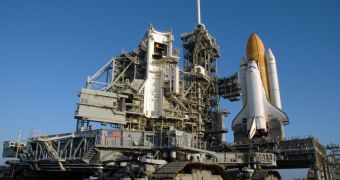Eric Anderson, director and CEO of Space Adventures, is working on yet another ambitious project – to carry people into orbit and further with own personal rockets. To that end, he gave the order and the money to Russian engineers, who are to build him a Soyuz-class missile, capable of orbital delivery. The stipulated date for the completion of the work is not yet available.
Anderson has been taking tourists into space ever since he and the Russian space program closed a deal to carry paying passengers aboard the International Space Station for extended stays. In “orbital” terms, this means as much as a week. Such an endeavor requires extensive physical training, very similar to that NASA's own astronauts undergo before launch. But, apparently, Anderson is now unsatisfied with the rate at which his business with the Russians is going. Space Adventures' CEO expressed his desire to have a permanent means of orbital transportation at his disposal at all times. His plans are to offer betrotheds the possibility of joining their destinies in outer space, at the whopping price of $100 million.
However, these are just the short-term objectives. In the future, Anderson plans to take a more advanced missile on a trip around the Moon, which will, of course, be available to those interested for a substantial amount of money. However, the technical difficulties of low-cost space flights still make the price ranges prohibitively high. In order for them to lower, new types of fuel will have to be developed, as conventional chemical fuel seems to have reached its maximum potential.
In the future, scientists at various space agencies hope to develop the anticipated hypersonic ramjet, a type of propulsion that will generate enormous amounts of thrust, capable of delivering larger objects in orbit, or lighter objects even farther away. Some speculate on new possible delivery systems for advanced space shuttles. But the fact that NASA continues to work on its Ares-Orion project shows that such capabilities are still far away.

 14 DAY TRIAL //
14 DAY TRIAL //